#software defined data center
Explore tagged Tumblr posts
Link
Reduced operations expenses, enhanced up-time, as well as improved productivity through enhanced network access in the organizations drives the demand for...
0 notes
Text
Enterprise-Grade Datacenter Network Solutions by Esconet
Esconet Technologies offers cutting-edge datacenter network solutions tailored for enterprises, HPC, and cloud environments. With support for high-speed Ethernet (10G to 400G), Software-Defined Networking (SDN), Infiniband, and Fibre‑Channel technologies, Esconet ensures reliable, scalable, and high-performance connectivity. Their solutions are ideal for low-latency, high-bandwidth applications and are backed by trusted OEM partnerships with Cisco, Dell, and HPE. Perfect for businesses looking to modernize and secure their datacenter infrastructure. for more details visit: Esconet Datacenter Network Page
#Datacenter Network#Enterprise Networking#High-Speed Ethernet#Software-Defined Networking (SDN)#Infiniband Network#Fibre Channel Storage#Network Infrastructure#Data Center Solutions#10G to 400G Networking#Low Latency Networks#Esconet Technologies#Datacenter Connectivity#Leaf-Spine Architecture#Network Virtualization#High Performance Computing (HPC)
0 notes
Text
Networking Reimagined: How SDN & NFV Are Shaping the Future of Connectivity.
Sanjay Kumar Mohindroo Sanjay Kumar Mohindroo. skm.stayingalive.in Explore how Software-Defined Networking and Network Function Virtualization empower agile, programmable, and efficient networks for cloud and data center environments. #SDN #NFV #Networking A New Dawn in Networking Opening the Door to a Smarter Digital World Software-Defined Networking (SDN) and Network Function…
#agile networks#cloud networks#data center#Network Function Virtualization#network innovation#NFV#programmable networks#Sanjay Kumar Mohindroo#SDN#Software Defined Networking
0 notes
Text
Software-Defined Wide Area Network(SD-WAN) Market by Component, Organization Size, Deployment Mode, End User (Communication Service Providers, Data Centers, and Enterprises), and Geography—Global Forecast to 2029
#Wide Area Network#Software-Defined Wide Area Network#Data Center Automation#Network Security and Reliability
0 notes
Text
#Software-Defined Data Center Market#Software-Defined Data Center Market Trends#Software-Defined Data Center Market Growth#Software-Defined Data Center Market Industry#Software-Defined Data Center Market Research#Software-Defined Data Center Market Report
0 notes
Text
Windows Server 2025 Standard vs Datacenter

The Standard and Datacenter editions of Windows Server 2025 differ significantly in features, virtualization support, and pricing. Here are the mainly differences:
1. Virtualization Support
Windows Server 2025 Standard: Each license allows 2 virtual machines (VMs) plus 1 Hyper-V host.
Windows Server 2025 Datacenter: Provides unlimited virtual machines, making it ideal for large-scale virtualization environments.
2. Container Support
Windows Server 2025 Standard: Supports unlimited Windows containers but is limited to 2 Hyper-V containers.
Windows Server 2025 Datacenter: Supports unlimited Windows containers and Hyper-V containers.
3. Storage Features
Windows Server 2025 Standard:
Storage Replica is limited to 1 partnership and 1 volume (up to 2TB).
Does not support Storage Spaces Direct.
Windows Server 2025 Datacenter:
Unlimited Storage Replica partnerships.
Supports Storage Spaces Direct, enabling hyper-converged infrastructure (HCI).
4. Advanced Features
Windows Server 2025 Standard:
No support for Software-Defined Networking (SDN), Network Controller, or Shielded VMs.
No Host Guardian Hyper-V Support.
Windows Server 2025 Datacenter:
Supports SDN, Network Controller, and Shielded VMs, enhancing security and management.
Supports GPU partitioning, useful for AI/GPU-intensive workloads.
5. Pricing
Windows Server 2025 Standard:
$80.00 (includes 16 core ) at keyingo.com.
Windows Server 2025 Datacenter :
$90.00 (includes 16 core ) at keyingo.com.
Summary:
Windows Server 2025 Standard: Best for small businesses or physical server deployments with low virtualization needs.
Windows Server 2025 Datacenter: Designed for large-scale virtualization, hyper-converged infrastructure, and high-security environments, such as cloud providers and enterprise data centers.
#Windows Server 2025 Standard vs Datacenter#Windows Server 2025 Standard and Datacenter difference#Compare Windows Server 2025 Standard and Datacenter
7 notes
·
View notes
Text
Unleashing Innovation: How Intel is Shaping the Future of Technology
Introduction
In the fast-paced world of technology, few companies have managed to stay at the forefront of innovation as consistently as Intel. With a history spanning over five decades, Intel has transformed from a small semiconductor manufacturer into a global powerhouse that plays a pivotal role in shaping how we interact with technology today. From personal computing to artificial intelligence (AI) and beyond, Intel's innovations have not only defined industries but have also created new markets altogether.
youtube
In this comprehensive article, we'll delve deep into how Intel is unleashing innovation and shaping the future of technology across various domains. We’ll explore its history, key products, groundbreaking research initiatives, sustainability efforts, and much more. Buckle up as we take you on a journey through Intel’s dynamic Extra resources landscape.
Unleashing Innovation: How Intel is Shaping the Future of Technology
Intel's commitment to innovation is foundational to its mission. The company invests billions annually in research and development (R&D), ensuring that it remains ahead of market trends and consumer demands. This relentless pursuit of excellence manifests in several key areas:
The Evolution of Microprocessors A Brief History of Intel's Microprocessors
Intel's journey began with its first microprocessor, the 4004, launched in 1971. Since then, microprocessor technology has evolved dramatically. Each generation brought enhancements in processing power and energy efficiency that changed the way consumers use technology.
The Impact on Personal Computing
Microprocessors are at the heart of every personal computer (PC). They dictate performance capabilities that directly influence user experience. By continually optimizing their designs, Intel has played a crucial role in making PCs faster and more powerful.
Revolutionizing Data Centers High-Performance Computing Solutions
Data centers are essential for businesses to store and process massive amounts of information. Intel's high-performance computing solutions are designed to handle complex workloads efficiently. Their Xeon processors are specifically optimized for data center applications.
Cloud Computing and Virtualization
As cloud services become increasingly popular, Intel has developed technologies that support virtualization and cloud infrastructure. This innovation allows businesses to scale operations rapidly without compromising performance.
Artificial Intelligence: A New Frontier Intel’s AI Strategy
AI represents one of the most significant technological advancements today. Intel recognizes this potential and has positioned itself as a leader in AI hardware and software solutions. Their acquisitions have strengthened their AI portfolio significantly.
AI-Powered Devices
From smart assistants to autonomous vehicles, AI is embedded in countless devices today thanks to advancements by companies like Intel. These innovations enhance user experience by providing personalized services based on data analysis.
Internet of Things (IoT): Connecting Everything The Role of IoT in Smart Cities
2 notes
·
View notes
Text
Beginner's learning to understand Xilinx product series including Zynq-7000, Artix, Virtex, etc.
Xilinx (Xilinx) as the world's leading supplier of programmable logic devices has always been highly regarded for its excellent technology and innovative products. Xilinx has launched many excellent product series, providing a rich variety of choices for different application needs.

I. FPGA Product Series
Xilinx's FPGA products cover multiple series, each with its own characteristics and advantages.
The Spartan series is an entry-level product with low price, power consumption, and small size. It uses a small package and provides an excellent performance-power ratio. It also contains the MicroBlaze™ soft processor and supports DDR3 memory. It is very suitable for industrial, consumer applications, and automotive applications, such as small controllers in industrial automation, simple logic control in consumer electronics, and auxiliary control modules in automotive electronics.
The Artix series, compared to the Spartan series, adds serial transceivers and DSP functions and has a larger logic capacity. It achieves a good balance between cost and performance and is suitable for mid-to-low-end applications with slightly more complex logic, such as software-defined radios, machine vision, low-end wireless backhaul, and embedded systems that are cost-sensitive but require certain performance.
The Kintex series is a mid-range series that performs excellently in terms of the number of hard cores and logic capacity. It achieves an excellent cost/performance/power consumption balance for designs at the 28nm node, provides a high DSP rate, cost-effective packaging, and supports mainstream standards such as PCIe® Gen3 and 10 Gigabit Ethernet. It is suitable for application scenarios such as data centers, network communications, 3G/4G wireless communications, flat panel displays, and video transmission.
The Virtex series, as a high-end series, has the highest performance and reliability. It has a large number of logic units, high-bandwidth serial transceivers, strong DSP processing capabilities, and rich storage resources, and can handle complex calculations and data streams. It is often used in application fields with extremely high performance requirements such as 10G to 100G networking, portable radars, ASIC prototyping, high-end military communications, and high-speed signal processing.

II. Zynq Product Series
The Zynq - 7000 series integrates ARM and FPGA programmable logic to achieve software and hardware co-design. It provides different models with different logic resources, storage capacities, and interface numbers to meet different application needs. The low-power consumption characteristic is suitable for embedded application scenarios such as industrial automation, communication equipment, medical equipment, and automotive electronics.
The Zynq UltraScale + MPSoC series has higher performance and more abundant functions, including more processor cores, larger storage capacities, and higher communication bandwidths. It supports multiple security functions and is suitable for applications with high security requirements. It can be used in fields such as artificial intelligence and machine learning, data center acceleration, aerospace and defense, and high-end video processing.
The Zynq UltraScale + RFSoC series is similar in architecture to the MPSoC and also has ARM and FPGA parts. However, it has been optimized and enhanced in radio frequency signal processing and integrates a large number of radio frequency-related modules and functions such as ADC and DAC, which can directly collect and process radio frequency signals, greatly simplifying the design complexity of radio frequency systems. It is mainly applied in radio frequency-related fields such as 5G communication base stations, software-defined radios, and phased array radars.

III. Versal Series
The Versal series is Xilinx's adaptive computing acceleration platform (ACAP) product series.
The Versal Prime series is aimed at a wide range of application fields and provides high-performance computing and flexible programmability. It has high application value in fields such as artificial intelligence, machine learning, data centers, and communications, and can meet application scenarios with high requirements for computing performance and flexibility.
The Versal AI Core series focuses on artificial intelligence and machine learning applications and has powerful AI processing capabilities. It integrates a large number of AI engines and hardware accelerators and can efficiently process various AI algorithms and models, providing powerful computing support for artificial intelligence applications.
The Versal AI Edge series is designed for edge computing and terminal device applications and has the characteristics of low power consumption, small size, and high computing density. It is suitable for edge computing scenarios such as autonomous driving, intelligent security, and industrial automation, and can achieve efficient AI inference and real-time data processing on edge devices.
In short, Xilinx's product series are rich and diverse, covering various application needs from entry-level to high-end. Whether in the FPGA, Zynq, or Versal series, you can find solutions suitable for different application scenarios, making important contributions to promoting the development and innovation of technology.
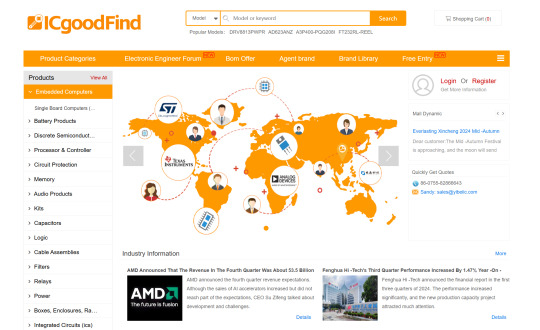
In terms of electronic component procurement, Yibeiic and ICgoodFind are your reliable choices. Yibeiic provides a rich variety of Xilinx products and other types of electronic components. Yibeiic has a professional service team and efficient logistics and distribution to ensure that you can obtain the required products in a timely manner. ICgoodFind is also committed to providing customers with high-quality electronic component procurement services. ICgoodFind has won the trust of many customers with its extensive product inventory and good customer reputation. Whether you are looking for Xilinx's FPGA, Zynq, or Versal series products, or electronic components of other brands, Yibeiic and ICgoodFind can meet your needs.
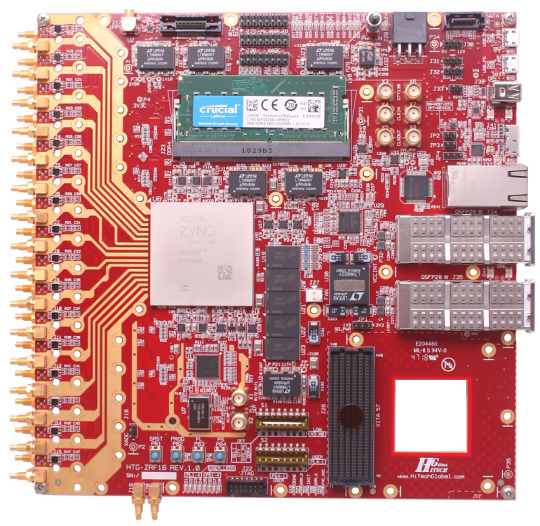
Summary by Yibeiic and ICgoodFind: Xilinx (Xilinx) as an important enterprise in the field of programmable logic devices, its products have wide applications in the electronics industry. As an electronic component supplier, Yibeiic (ICgoodFind) will continue to pay attention to industry trends and provide customers with high-quality Xilinx products and other electronic components. At the same time, we also expect Xilinx to continuously innovate and bring more surprises to the development of the electronics industry. In the process of electronic component procurement, Yibeiic and ICgoodFind will continue to provide customers with professional and efficient services as always.
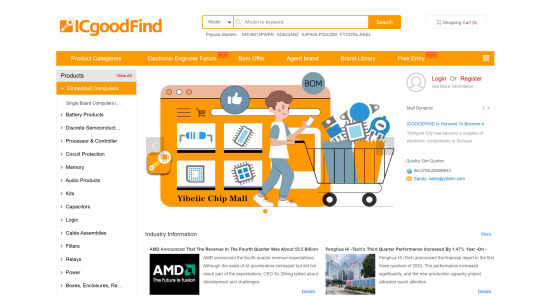
4 notes
·
View notes
Text
Effective B2B Contact Management: Unveiling Strategies to Harness B2B Database Leads and Elevate Sales Growth

In the ever-evolving landscape of B2B sales and marketing, the art of effective B2B contact management emerges as a critical force shaping success. This comprehensive guide delves into the intricate pathways of nurturing robust relationships, optimizing communication, and propelling substantial business growth. At the heart of this strategic journey lies the meticulously organized B2B contact database – a powerhouse for precision B2B lead generation, strategic sales leads, and amplified business development. This illuminating article embarks on a deep exploration of the core strategies that unveil the true potential of B2B databases, catalyzing a transformation from mere data reservoirs into dynamic engines driving precision and growth.
DOWNLOAD THE INFOGRAPHIC HERE
Defining a Clear Database Structure
Central to unlocking the potential of effective B2B contact management is the establishment of a crystal-clear database structure. This architectural marvel sets the stage for targeted B2B lead generation and strategic sales leads, akin to creating a roadmap for successful business development. Contacts are carefully categorized based on pertinent criteria – industry, company size, job titles, and geographic location. The creation of separate fields for pivotal contact details, encompassing names, email addresses, phone numbers, and company information, facilitates a streamlined approach for accessing crucial data. This structured foundation becomes the epicenter from which personalized B2B sales prospects are cultivated and business development thrives.
Regular Data Cleansing and Updates
Much like tending to a thriving garden, maintaining an accurate B2B contact database involves nurturing and pruning. Through consistent data cleansing practices, redundancies are eradicated, errors are rectified, and outdated information is supplanted. This meticulous process not only sharpens the efficacy of B2B lead generation but fortifies the database's integrity. The adoption of data cleansing tools or the strategic outsourcing of this task ensures the accuracy and dependability of sales leads. A refined database lays the groundwork for triumphant B2B sales endeavors.
Implementing a Centralized Database System
Efficiency and organization take center stage in the modern business ecosystem, and the implementation of a centralized database system or customer relationship management (CRM) software exemplifies this ethos. This unified platform serves as the nucleus for storing contact information, tracking interactions, and orchestrating seamless communication. A judicious selection of a system tailored to organizational requirements, boasting features such as customizable fields, tagging, and segmentation, transforms B2B lead generation and sales leads into actionable insights. This integration amplifies the potency of business development initiatives.
Segmenting Contacts for Targeted Outreach
In the dynamic realm of B2B interactions, precision is paramount. Enter the realm of contact segmentation – the art of categorizing contacts based on specific criteria that enrich B2B lead generation efforts. By grouping contacts according to industry, job roles, interests, or engagement levels, the potency of personalized outreach escalates. Each interaction becomes a personalized symphony, every correspondence speaks directly to the recipient's needs. This strategic approach metamorphoses sales leads into symbiotic partnerships, heralding a new era in business development.
youtube
Integrating the Database with Other Tools
The essence of modern business lies in interconnectedness. The harmonious integration of your B2B contact database with other tools and systems encapsulates this ethos. Picture seamless fusion with email marketing platforms, sales automation tools, and customer support systems – this synergy propels the fluid flow of data, automates repetitive tasks, and nurtures cross-functional collaboration. The integration augments B2B lead generation, amplifies business development, and charts a transformative course for your database's evolution into a hub of productivity.
Implementing Data Security Measures
In a landscape defined by digital interconnectedness, safeguarding data is paramount. Robust data security measures form an impervious barrier around the B2B contact information. Enforcing stringent password policies, limiting access to authorized personnel, and maintaining regular backups fortify defenses against potential breaches. Staying vigilant regarding data privacy regulations is a testament to your commitment to maintaining trust with B2B sales leads and partners.
Providing Training and Documentation
Empowerment extends beyond technology, encompassing adept handling of the contact management system by your team. Comprehensive training ensures flawless data entry, accurate updates, and optimal utilization of database features. In tandem, detailed documentation fosters a culture of effective database management, augmenting the value of B2B lead generation and sales prospects. As proficiency spreads, every interaction becomes an opportunity, every engagement a step towards nurturing enduring partnerships.
In summation, the art of effective B2B contact management strategies stands as the linchpin of impactful B2B lead generation, strategic sales leads, and business development. From structuring your database meticulously to integrating advanced tools such as AccountSend, each component harmonizes in a symphony of success. By embracing these strategies, you orchestrate growth, cultivate relationships, and pave a path toward enduring success in a competitive landscape. Embark on this enlightening journey, revolutionize your B2B endeavors, and witness your contact database morph into an instrumental asset fueling triumphant B2B lead generation, strategic sales prospects, and exponential growth.
#B2BLeadGeneration#B2B#LeadGeneration#B2BSales#SalesLeads#B2BDatabases#BusinessDevelopment#SalesFunnel#AccountSend#SalesProspecting#BusinessOwner#Youtube
17 notes
·
View notes
Text
The AWS Advantage: Exploring the Key Reasons Behind Its Dominance
In the ever-evolving landscape of cloud computing and web services, Amazon Web Services (AWS) has emerged as a true juggernaut. Its dominance transcends industries, making it the preferred choice for businesses, startups, and individuals alike. AWS's meteoric rise can be attributed to a potent combination of factors that have revolutionized the way organizations approach IT infrastructure and software development. In this comprehensive exploration, we will delve into the multifaceted reasons behind AWS's widespread popularity. We'll dissect how scalability, reliability, cost-effectiveness, a vast service portfolio, unwavering security, global reach, relentless innovation, and hybrid/multi-cloud capabilities have all played crucial roles in cementing AWS's position at the forefront of cloud computing.

The AWS Revolution: Unpacking the Reasons Behind Its Popularity:
1. Scalability: Fueling Growth and Flexibility AWS's unparalleled scalability is one of its defining features. This capability allows businesses to start with minimal resources and effortlessly scale their infrastructure up or down based on demand. Whether you're a startup experiencing rapid growth or an enterprise dealing with fluctuating workloads, AWS offers the flexibility to align resources with your evolving requirements. This "pay-as-you-go" model ensures that you only pay for what you use, eliminating the need for costly upfront investments in hardware and infrastructure.
2. Reliability: The Backbone of Mission-Critical Operations AWS's reputation for reliability is second to none. With a highly resilient infrastructure and a robust global network, AWS delivers on its promise of high availability. It offers a Service Level Agreement (SLA) that guarantees impressive uptime percentages, making it an ideal choice for mission-critical applications. Businesses can rely on AWS to keep their services up and running, even in the face of unexpected challenges.
3. Cost-Effectiveness: A Game-Changer for Businesses of All Sizes The cost-effectiveness of AWS is a game-changer. Its pay-as-you-go pricing model enables organizations to avoid hefty upfront capital expenditures. Startups can launch their ventures with minimal financial barriers, while enterprises can optimize costs by only paying for the resources they consume. This cost flexibility is a driving force behind AWS's widespread adoption across diverse industries.
4. Wide Range of Services: A One-Stop Cloud Ecosystem AWS offers a vast ecosystem of services that cover virtually every aspect of cloud computing. From computing and storage to databases, machine learning, analytics, and more, AWS provides a comprehensive suite of tools and resources. This breadth of services allows businesses to address various IT needs within a single platform, simplifying management and reducing the complexity of multi-cloud environments.
5. Security: Fortifying the Cloud Environment Security is a paramount concern in the digital age, and AWS takes it seriously. The platform offers a myriad of security tools and features designed to protect data and applications. AWS complies with various industry standards and certifications, providing a secure environment for sensitive workloads. This commitment to security has earned AWS the trust of organizations handling critical data and applications.
6. Global Reach: Bringing Services Closer to Users With data centers strategically located in multiple regions worldwide, AWS enables businesses to deploy applications and services closer to their end-users. This reduces latency and enhances the overall user experience, a crucial advantage in today's global marketplace. AWS's global presence ensures that your services can reach users wherever they are, ensuring optimal performance and responsiveness.
7. Innovation: Staying Ahead of the Curve AWS's culture of innovation keeps businesses at the forefront of technology. The platform continually introduces new services and features, allowing organizations to leverage the latest advancements without the need for significant internal development efforts. This innovation-driven approach empowers businesses to remain agile and competitive in a rapidly evolving digital landscape.
8. Hybrid and Multi-Cloud Capabilities: Embracing Diverse IT Environments AWS recognizes that not all organizations operate solely in the cloud. Many have on-premises infrastructure and may choose to adopt a multi-cloud strategy. AWS provides solutions for hybrid and multi-cloud environments, enabling businesses to seamlessly integrate their existing infrastructure with the cloud or even leverage multiple cloud providers. This flexibility ensures that AWS can adapt to the unique requirements of each organization.
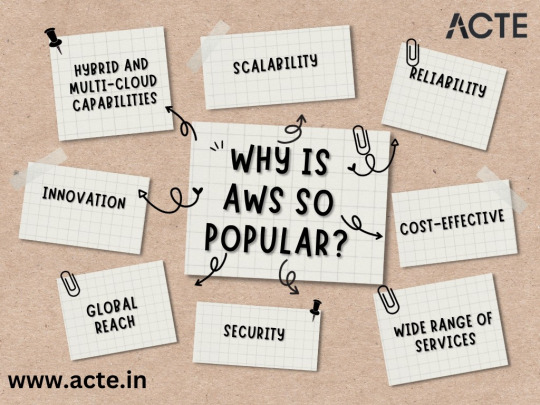
Amazon Web Services has risen to unprecedented popularity by offering unmatched scalability, reliability, cost-effectiveness, and a comprehensive service portfolio. Its commitment to security, global reach, relentless innovation, and support for hybrid/multi-cloud environments make it the preferred choice for businesses worldwide. ACTE Technologies plays a crucial role in ensuring that professionals can harness the full potential of AWS through its comprehensive training programs. As AWS continues to shape the future of cloud computing, those equipped with the knowledge and skills provided by ACTE Technologies are poised to excel in this ever-evolving landscape.
7 notes
·
View notes
Text
Arista 7050X3 Series
Industry-Leading Performance, Power Efficiency, and High Availability

Highly dynamic cloud and enterprise data center networks continue to grow, leading to ever-increasing bandwidth requirements. , the need for high-density 25 and 100 Gigabit Ethernet switching is accelerating. In both areas, the sheet layer and back layer of the network. The Arista 7050X3 is a member of the Arista 7050X series and is a key component of the Arista portfolio of data center switches. The Arista 7050X series is a purpose-built data center switch in a compact, power-efficient form factor that combines wire-speed Layer 2 and Layer 3 functionality with low latency and advanced EOS features for software-defined cloud networking. Masu. When combined with the
Arista DCS, the 7050X3 can be deployed in a variety of open networking solutions, including large-scale Layer 2 and Layer 3 cloud designs, overlay networks, and virtualized or traditional enterprise data center networks.
Introducing the Arista 7050X3 Series
The 7050X3 supports flexible combinations of speeds including 10G, 25G, 40G, and 100G in a compact form factor, allowing customers to adapt to a myriad of different applications and east-west traffic patterns in modern data centers. Allows you to design your network accordingly. It also provides investment protection.
The 7050X3 supports many EOS features already supported by other Arista X-series systems. Consistency of operations and functionality reduces time to certification. Improvements include the addition of single-path VXLAN routing for network segmentation, dynamic load balancing (DLB) for optimized path selection, and network address translation (NAT).
2 notes
·
View notes
Text
Understanding Object-Oriented Programming and OOPs Concepts in Java
Object-oriented programming (OOP) is a paradigm that has revolutionized software development by organizing code around the concept of objects. Java, a widely used programming language, embraces the principles of OOP to provide a robust and flexible platform for developing scalable and maintainable applications. In this article, we will delve into the fundamental concepts of Object-Oriented Programming and explore how they are implemented in Java.

Object-Oriented Programming:
At its core, Object-Oriented Programming is centered on the idea of encapsulating data and behavior into objects. An object is a self-contained unit that represents a real-world entity, combining data and the operations that can be performed on that data. This approach enhances code modularity, and reusability, and makes it easier to understand and maintain.
Four Pillars of Object-Oriented Programming:
Encapsulation: Encapsulation involves bundling data (attributes) and methods (functions) that operate on the data within a single unit, i.e., an object. This encapsulation shields the internal implementation details from the outside world, promoting information hiding and reducing complexity.
Abstraction: Abstraction is the process of simplifying complex systems by modeling classes based on essential properties. In Java, abstraction is achieved through abstract classes and interfaces. Abstract classes define common characteristics for a group of related classes, while interfaces declare a set of methods that must be implemented by the classes that implement the interface.
Inheritance: Inheritance is a mechanism that allows a new class (subclass or derived class) to inherit properties and behaviors of an existing class (superclass or base class). This promotes code reuse and establishes a hierarchy, facilitating the creation of specialized classes while maintaining a common base.
Polymorphism: Polymorphism allows objects of different types to be treated as objects of a common type. This is achieved through method overloading and method overriding. Method overloading involves defining multiple methods with the same name but different parameters within a class, while method overriding allows a subclass to provide a specific implementation of a method that is already defined in its superclass.
Java Implementation of OOP Concepts:
Classes and Objects: In Java, a class is a blueprint for creating objects. It defines the attributes and methods that the objects of the class will have. Objects are instances of classes, and each object has its own set of attributes and methods. Classes in Java encapsulate data and behavior, fostering the principles of encapsulation and abstraction.
Abstraction in Java: Abstraction in Java is achieved through abstract classes and interfaces. Abstract classes can have abstract methods (methods without a body) that must be implemented by their subclasses. Interfaces declare a set of methods that must be implemented by any class that implements the interface, promoting a higher level of abstraction.
Inheritance in Java: Java supports single and multiple inheritances through classes and interfaces. Subclasses in Java can inherit attributes and methods from a superclass using the extends keyword for classes and the implements keyword for interfaces. Inheritance enhances code reuse and allows the creation of specialized classes while maintaining a common base.
Polymorphism in Java: Polymorphism in Java is manifested through method overloading and overriding. Method overloading allows a class to define multiple methods with the same name but different parameters. Method overriding occurs when a subclass provides a specific implementation for a method that is already defined in its superclass. This enables the use of a common interface for different types of objects.
Final Thoughts:
Object-oriented programming and its concepts form the foundation of modern software development. Java, with its robust support for OOP, empowers developers to create scalable, modular, and maintainable applications. Understanding the principles of encapsulation, abstraction, inheritance, and polymorphism is crucial for harnessing the full potential of OOPs concepts in Java. As you continue your journey in software development, a solid grasp of these concepts will be invaluable in designing efficient and effective solutions.
#javascript#javaprogramming#java online training#oops concepts in java#object oriented programming#education#technology#study blog#software#it#object oriented ontology#java course
3 notes
·
View notes
Text
#Wide Area Network#Software-Defined Wide Area Network#Data Center Automation#Network Security and Reliability
0 notes
Text
Mastering the DevOps Landscape: A Comprehensive Exploration of Roles and Responsibilities
Embarking on a career in DevOps opens the door to a dynamic and collaborative experience centered around optimizing software development and delivery. This multifaceted role demands a unique blend of technical acumen and interpersonal skills. Let's delve into the intricate details that define the landscape of a DevOps position, exploring the diverse aspects that contribute to its dynamic nature.
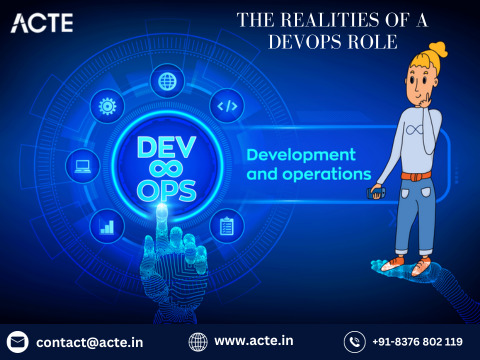
1. The Synergy of Collaboration: At the core of DevOps lies a strong emphasis on collaboration. DevOps professionals navigate the intricacies of working closely with development, operations, and cross-functional teams, fostering effective communication and teamwork to ensure an efficient software development lifecycle.
2. Orchestrating End-to-End Excellence: DevOps practitioners shoulder the responsibility for the entire software delivery pipeline. From coding and testing to deployment and monitoring, they orchestrate a seamless and continuous workflow, responding promptly to changes and challenges, resulting in faster and more reliable software delivery.
3. The Automation Symphony and IaC Choreography: Automation takes center stage in DevOps practices. DevOps professionals automate repetitive tasks, enhancing efficiency and reliability. Infrastructure as Code (IaC) adds another layer, facilitating consistent and scalable infrastructure management and further streamlining the deployment process.
4. Unveiling the CI/CD Ballet: Continuous Integration (CI) and Continuous Deployment (CD) practices form the elegant dance of DevOps. This choreography emphasizes regular integration, testing, and automated deployment, effectively identifying and addressing issues in the early stages of development.
5. Monitoring and Analytics Spotlight: DevOps professionals shine a spotlight on monitoring and analytics, utilizing specialized tools to track applications and infrastructure. This data-driven approach enables proactive issue resolution and optimization, contributing to the overall health and efficiency of the system.
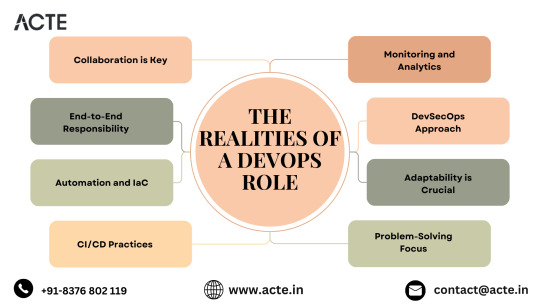
6. The Art of DevSecOps: Security is not a mere brushstroke; it's woven into the canvas of DevOps through the DevSecOps approach. Collaboration with security teams ensures that security measures are seamlessly integrated throughout the software development lifecycle, fortifying the system against vulnerabilities.
7. Navigating the Ever-Evolving Terrain: Adaptability is the compass guiding DevOps professionals through the ever-evolving landscape. Staying abreast of emerging technologies, industry best practices, and evolving methodologies is crucial for success in this dynamic environment.
8. Crafting Solutions with Precision: DevOps professionals are artisans in problem-solving. They skillfully troubleshoot issues, identify root causes, and implement solutions to enhance system reliability and performance, contributing to a resilient and robust software infrastructure.
9. On-Call Symphony: In some organizations, DevOps professionals play a role in an on-call rotation. This symphony involves addressing operational issues beyond regular working hours, underscoring the commitment to maintaining system stability and availability.
10. The Ongoing Learning Odyssey: DevOps is an ever-evolving journey of learning. DevOps professionals actively engage in ongoing skill development, participate in conferences, and connect with the broader DevOps community to stay at the forefront of the latest trends and innovations, ensuring they remain masters of their craft.
In essence, a DevOps role is a voyage into the heart of modern software development practices. With a harmonious blend of technical prowess, collaboration, and adaptability, DevOps professionals navigate the landscape, orchestrating excellence in the efficient and reliable delivery of cutting-edge software solutions.
3 notes
·
View notes